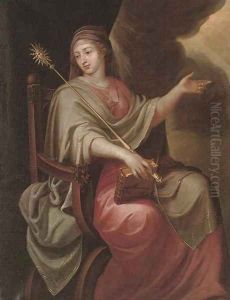Gasper De Crayer Paintings
Gasper de Crayer was a prominent Flemish painter and draughtsman born in Antwerp in 1584. His work, deeply rooted in the Baroque style, was instrumental in the development of Flemish and European art during the 17th century. Though his name may not resonate as widely as some of his contemporaries, such as Peter Paul Rubens or Anthony van Dyck, de Crayer's contributions to art history, particularly in the realm of religious and portrait painting, are significant.
De Crayer received his artistic training in the bustling city of Antwerp, a major hub for the arts in the 17th century. However, much of his career was spent in Brussels, where he gained the patronage of prominent members of the Habsburg court and the Catholic Church. His ability to secure commissions from such influential patrons was not only a testament to his skill but also to his adaptability and the wide appeal of his art. De Crayer was known for his mastery in handling religious themes, imbuing his subjects with a sense of piety and devotion that resonated with his contemporaries. His altarpieces and religious works are characterized by their dramatic intensity, meticulous composition, and vibrant color palette, elements that align him with the broader Baroque movement.
Aside from religious art, de Crayer was also a sought-after portraitist, capturing the likeness of many notable figures of his time. His portraits are praised for their realism, depth of character, and subtle use of color. Despite his success, de Crayer remained a humble artist, dedicated to his craft and his faith, which continued to inspire his work throughout his life.
De Crayer's influence extended beyond his immediate circle through his role as a teacher and mentor to younger artists. His legacy is preserved in numerous churches and museums across Europe, where his paintings continue to be admired for their emotional depth and technical prowess. Gasper de Crayer passed away in Ghent in 1669, leaving behind a body of work that continues to be studied and celebrated for its contribution to the Baroque era and Flemish art.
